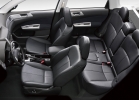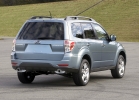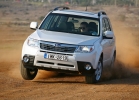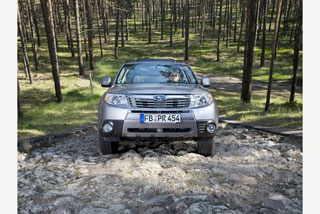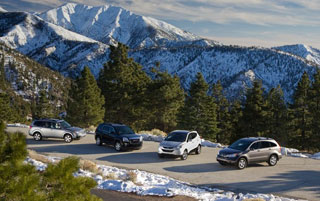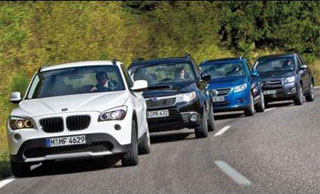Subaru Forester test drive since 2008 SUV
Nissan X-Trail 2.5 against the eminent Subaru Forester 2.5
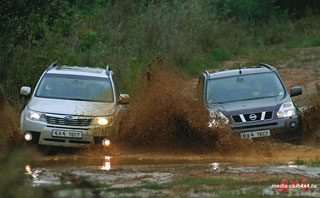 Japanese crossovers with engines without a boost: Subaru Forester and Nissan X-Trail. It is difficult to choose an equal opponent for Subaru Forester. Well, with whom to compare it? This question can torment for a long time if you keep in mind the Forester with a 2.5 -liter engine and a turbine.
Japanese crossovers with engines without a boost: Subaru Forester and Nissan X-Trail. It is difficult to choose an equal opponent for Subaru Forester. Well, with whom to compare it? This question can torment for a long time if you keep in mind the Forester with a 2.5 -liter engine and a turbine. He is too kind. Therefore, for a comparative test, we took the atmospheric Subaru, it is much easier with it. And the pair was immediately found Nissan X-Trail 2.5 liters. The same volume of motors, a similar type of all -wheel drive, similar price. The starting conditions are equal, you can start. Go!
Strange transformations
Another circumstance unites the testers of the test. They are both victims of modern marketing tricks. X-Trail on a common aggregate base with small Qashqai, and this is immediately visible from its small base and small wheels. How otherwise, because the hobby of the Nissanrenaut alliance reduction. The new Forester was blinded from the old forester, but not as usual, with the preservation of the devils beloved by the consumers, but, on the contrary, diligently destroying them. True, version 2.5 Turbo behaves completely differently: there is a suspension, brakes, steering all gives delight. Atmospheric Forester 2.5 compared to it is just a roof, designed for the average consumer.
 Opponents go, fully consistent with these conquered ideologies of our Dark Age. X-Trail demonstrates the habits of a slightly softened Qashqai. He can’t get away from the fact that a bulky body rests on a small wheelbase. And Forester is similar to a sports station wagon, who was carried out hastily and some budget glamorization of the suspension: in general, softly, but for the lying policemen, for some reason, the ass is thrown like a loaf.
Opponents go, fully consistent with these conquered ideologies of our Dark Age. X-Trail demonstrates the habits of a slightly softened Qashqai. He can’t get away from the fact that a bulky body rests on a small wheelbase. And Forester is similar to a sports station wagon, who was carried out hastily and some budget glamorization of the suspension: in general, softly, but for the lying policemen, for some reason, the ass is thrown like a loaf. Studwon \u200b\u200bMotor!
What is the worst to go quickly? On Nissan, due to a combination of a high center of gravity, short base and larger (77 kg) car weight. Although both participants in the dough are rolled up about the same in turn, the Subaru body roll is perceived as lighter, and the X-Trail body, falling to the side, makes it possible to feel the power of inertia. When the X-Trail is traveling, the road workers forgive the road workers all the defects of the canvas, but its wheel hits the obstacle more than that of Forester.
We completed the asphalt walk with fun starts: I sat in Subaru and at the finish gave way to a colleague in Nissan approximately the corps. We started again, and unexpectedly the corps gave way to my counterpart. After we changed places several times, tried a sports regime and ordinary, but any advantage of one car over another was explained only by the human factor. Japanese crossovers go on an equal footing.
Matter: Subaru Forester
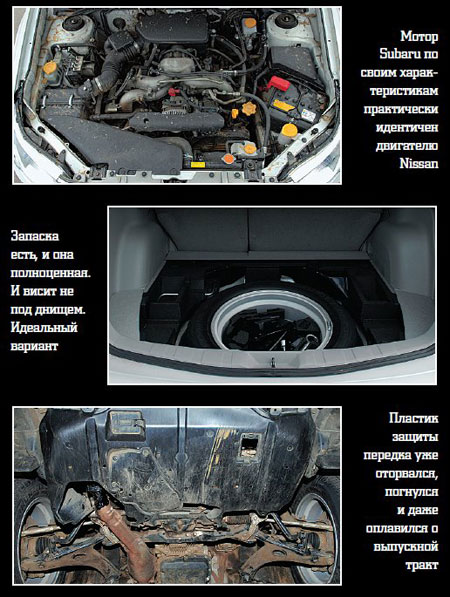
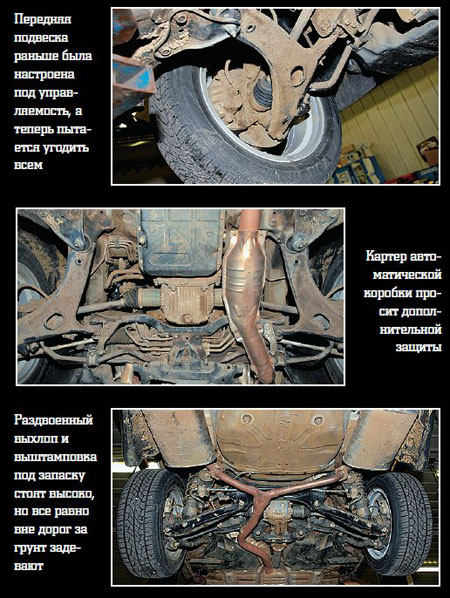
Matter: Nissan X-Trail

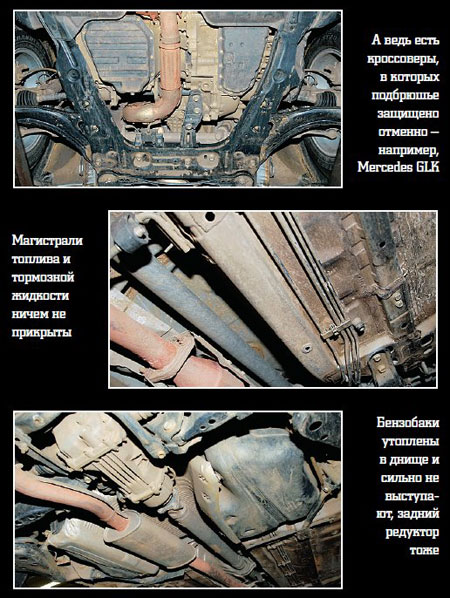
Then a hole, then a ditch
However, the dispute did not end. We continued on off -road. But first, it was necessary to assess the level of readiness of the SUVs for driving through the crossed terrain. The tires are all -season. Protection of the motor compartment for both are worthless. Geometric cross -country ability, namely the space under the front and rear bumpers, is comparable, although Subaru, unlike Nissan, does not indicate the exact value of the angles of entry/congress for Forester.
There are differences in transmission. In general, they work on a similar algorithm, connecting the rear axle when slipping the front, but the Nissan has a variator with virtual steps, and Subaru has a four -stage automatic transmission.
 X-Trail is equipped with a 4x4 connection coupling lock, but Forester is not. Experience shows that the so -called blocking in modern multi -disabilities is more likely to be an advertising course and, by and large, does not lead to anything other than overheating of the coupling.
X-Trail is equipped with a 4x4 connection coupling lock, but Forester is not. Experience shows that the so -called blocking in modern multi -disabilities is more likely to be an advertising course and, by and large, does not lead to anything other than overheating of the coupling. Subaru has an off -road button one shutdown ESP. But for rough terrain and it was unnecessary. We found a number of meter bugrs, passing between which you can post the wheels alternately and check the work of electronic assistants. Here is our dispute who has erupted with renewed vigor. Move or stand, helplessly beating? Both cars solved this issue, focusing on the small nuances of the driving style of a particular pilot. These are far from the cars on which you can primitively burn the pedals. Here you need to roll back, feel how the coupling reacts to the different degree of the opening of the accelerator, how the electronics of the steering angle of rotation reads. ESP could be disabled, but in the conditions of diagonal hanging, on the contrary, it is difficult without an electronic assistant.
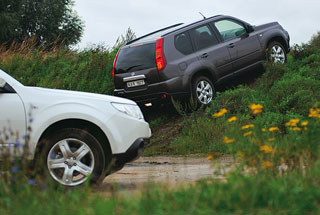 In the ambush places, the lighter Subaru felt more confident. Nissan turned out to be good in another discipline: the smoothness of the course on the dirt road is better, while Forester is noticeably shaking.
In the ambush places, the lighter Subaru felt more confident. Nissan turned out to be good in another discipline: the smoothness of the course on the dirt road is better, while Forester is noticeably shaking. Looking from the X-Trail cabin, you see a full-fledged large hood that, as it were, demonstrates the off-road, but you should get into a narrow hollow with crumbling edges, as this illusion disappears. But the light Forester with its parquet view leaves the trap is noticeably easier. At the same time, in favor of the X-Trail, we write down the electronic assistance system when descent from the mountain, which Subaru has no.
Baggage vs passengers
Given the approximately equal ratio of disadvantages and advantages when behavior on the road and outside it, you will have to make a choice based on other parameters. Say, Forester's rear passengers spaces. But Nissan has won the volume of the trunk. So, everything is simplified to the question: who is more important than passengers or baggage?
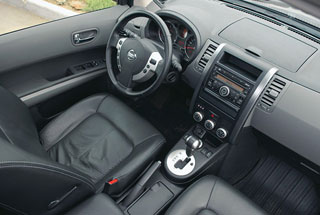
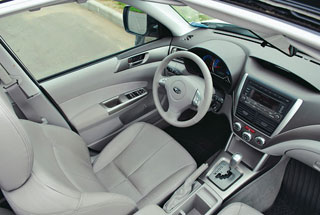
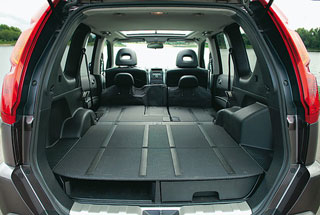

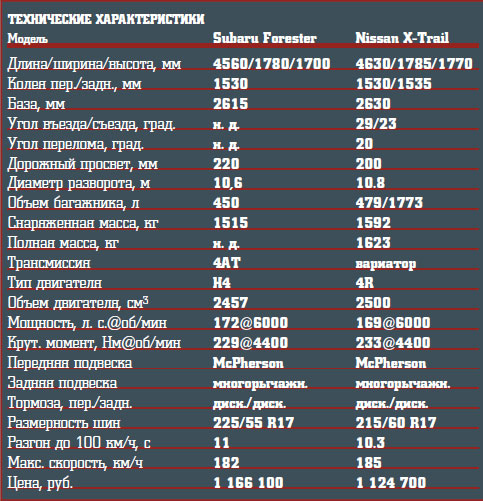
Author: Dmitry Leontyev, photo of Alexander Ortnova-Baranov
A source: Magazine 4x4 [February /2009]
Video Subaru Forester test drive since 2008
Subaru Forester Crash Video since 2008
Subaru Forester test drive since 2008
Subaru Forester Crash Test since 2008
Krassh Test: Detailed Information91%
Driver and passengers
73%
Pedestrians
91%
Children-passengers
86%
Active security system


